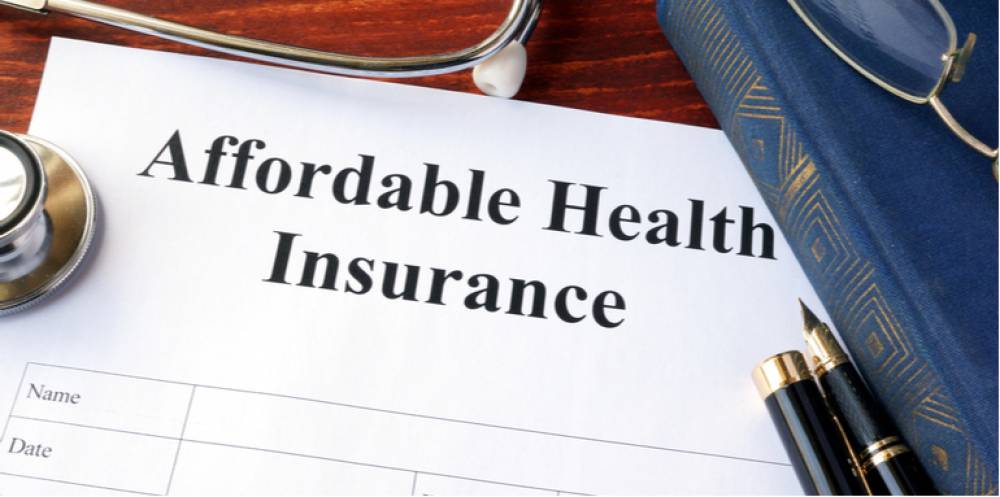Insurance provides a financial safety net, protecting against unexpected events—from a car accident to a medical emergency. But high premiums often put quality coverage out of reach for many. That’s where affordable insurance comes in: plans that strike a balance between cost and protection, ensuring peace of mind without breaking the bank.
This article explores:
- What “affordable insurance” really means across different types (health, auto, home, life, and business).
- Key factors that impact affordability.
- Strategies to find and compare low-cost policies that still meet your needs.
- Real-world examples and expert tips to help you shop smart.
By the end, you’ll understand not just how to find cheap coverage—but how to ensure it still delivers real value.
Key Takeaways
- Affordable Insurance Is About Value, Not Just Price
The cheapest policy may leave you underprotected. Affordable insurance balances cost with adequate coverage. - Always Compare Multiple Quotes
Shopping around using online comparison tools or brokers helps you find the best rates and coverage options. - Customize Your Policy to Your Needs
Adjust deductibles, coverage limits, and add-ons based on your personal risk tolerance and financial situation. - Bundling Policies Can Save You Money
Combining auto, home, and life insurance with one company often leads to significant discounts. - Use Available Discounts and Credits
Ask about safe driver discounts, loyalty credits, health programs, and other ways to lower premiums. - Government Programs Can Help Lower Costs
If eligible, subsidies and public insurance programs may make insurance more affordable. - Read the Policy Details Carefully
Understand exclusions, limits, and conditions to avoid surprises during a claim.
What Does “Affordable Insurance” Even Mean?
“Affordable insurance” isn’t just the cheapest option—it’s coverage that is cost-effective and sufficient for your needs, without undue sacrifice.
- Premium: The amount you pay regularly.
- Value: The protection and service you receive, especially when you file a claim.
- Suitability: Does the coverage actually match your risk—your vehicle, health profile, property, or business needs?
Affordable insurance means you find the sweet spot where cost aligns with coverage, and your policy works well when you need it most.
The term “affordable insurance” might seem straightforward at first—just insurance that doesn’t cost too much, right? But in reality, affordability is a nuanced concept that goes far beyond just the price tag on your monthly premium. To truly understand what affordable insurance means, it’s important to consider several key factors that define value, suitability, and financial impact.
Affordability Is Personal and Contextual
What’s affordable for one person might be too expensive for another. For example:
- A young professional with no dependents may find a $150 monthly health insurance premium affordable.
- A retiree living on a fixed income might struggle with the same cost.
- A small business owner might have a different definition based on the business’s revenue and risk.
This personal nature of affordability means you need to look at your budget, your financial obligations, and your risk tolerance when deciding what “affordable” means to you.
Beyond the Premium: Total Cost of Insurance
Many people think of affordability solely in terms of monthly or annual premiums. But a policy with a low premium can end up costing much more if it has:
- High deductibles: The amount you pay out-of-pocket before coverage kicks in.
- High copayments or coinsurance: Your share of costs for services.
- Coverage gaps: Missing essential protections that force you to pay full price in certain situations.
True affordability considers the total cost of using the insurance, not just the upfront price. A slightly higher premium might actually save you money if the policy covers more and lowers your expenses during a claim.
Value Over Price: What Are You Getting?
Affordable insurance means getting good value for what you pay. This includes:
- Adequate coverage for your risks (car, health, home, life, business)
- Reliable claims service and quick reimbursements
- Financial stability of the insurer (so they can pay claims when needed)
- Clear policy terms without confusing exclusions or loopholes
In other words, affordable insurance doesn’t mean sacrificing protection or service to save a few bucks—it means balancing cost with meaningful benefits.
The Role of Risk and Coverage Needs
Your personal risk profile heavily influences what affordable insurance looks like. For example:
- If you have a safe driving record, you might qualify for lower-cost auto insurance.
- If you’re young and healthy, your life or health insurance premiums may be more affordable.
- Conversely, if you live in an area prone to natural disasters, homeowners insurance might be more expensive but necessary.
Affordable insurance adapts to your unique situation, so you’re not paying for unnecessary coverage or taking on risky underinsurance.
Affordability Over Time
Insurance isn’t just about today’s price—it’s about sustainable costs over months and years. Sometimes, a cheaper policy now might lead to rate hikes later or poor coverage that forces costly out-of-pocket expenses.
Affordable insurance should fit comfortably within your long-term budget and provide peace of mind without financial strain.
Affordability and Financial Protection

At its core, insurance’s purpose is financial protection. Affordable insurance means you have coverage that protects your finances from unexpected, potentially catastrophic losses—without draining your resources.
It’s about risk management, not just cutting costs. Underinsurance can be more costly in the long run, so affordability includes making sure you’re adequately covered.
Why Insurance Can Be So Expensive
A few core factors drive insurance costs:
- Risk Factors: Age, location, driving history, health status, and property characteristics.
- Coverage Level: Higher coverage limits and lower deductibles = higher premiums.
- Claims History: Your personal or local claim trends influence pricing.
- Competition & Regulation: Markets with few options or heavy regulation can raise prices.
- Operational Costs: Administrative and claims-handling expenses impact premium rates.
Understanding these drivers is key to finding ways to reduce your costs without sacrificing protection.
Types of Affordable Insurance
Affordable Health Insurance
- Deductibles vs. premiums: Plans with higher deductibles cost less monthly but require more upfront if you get sick.
- Subsidies: Government assistance (e.g., ACA credits) can dramatically lower monthly costs.
- Short-term vs long-term: Temporary plans may be cheaper—but often don’t cover pre-existing conditions.
Health insurance is one of the most critical and often costly types of insurance for individuals and families. With rising medical expenses, finding affordable health insurance can feel like a daunting challenge—but it’s essential for protecting your health and finances.
What Makes Health Insurance Affordable?
Affordable health insurance isn’t just about the lowest monthly premium. It involves balancing multiple factors to find a plan that fits your budget and provides meaningful coverage when you need care.
Key Components Affecting Affordability in Health Insurance
Premiums
- The premium is the amount you pay monthly or annually for your health plan. Lower premiums often mean higher out-of-pocket costs when you receive care.
- Affordable premiums are important, but they shouldn’t be your only consideration.
Deductibles
- The deductible is the amount you must pay out of pocket before your insurance begins to pay.
- Plans with high deductibles usually have lower premiums and can be affordable if you don’t expect frequent doctor visits or expensive procedures.
- For some, especially those with chronic conditions, a lower deductible plan might be more affordable overall despite higher premiums.
Copayments and Coinsurance
- These are the amounts you pay when you visit a doctor or fill a prescription after meeting your deductible.
- Copays are fixed amounts; coinsurance is a percentage of the cost.
- Plans with lower copays and coinsurance typically have higher premiums.
Out-of-Pocket Maximum
- This is the most you’ll pay in a year for covered services, including deductibles, copays, and coinsurance.
- A lower out-of-pocket max increases premiums but caps your total spending, providing financial protection in case of serious illness.
Types of Affordable Health Insurance Plans
Marketplace Plans
- Offered through the Health Insurance Marketplace established by the Affordable Care Act.
- Subsidies based on income can significantly reduce premiums, making plans more affordable for eligible individuals and families.
- Plans are categorized by “metal levels” (Bronze, Silver, Gold, Platinum) that balance premiums and out-of-pocket costs.
Medicaid and CHIP
- For low-income individuals and families, Medicaid offers comprehensive coverage often with little or no cost.
- The Children’s Health Insurance Program (CHIP) helps cover kids in families with incomes too high for Medicaid but too low for private insurance.
Short-Term Health Insurance
- Temporary plans designed to cover gaps in insurance.
- Usually cheaper but often exclude coverage for pre-existing conditions and don’t cover essential health benefits.
Catastrophic Health Insurance
- Designed for young, healthy people who want to protect against worst-case scenarios.
- Low premiums but very high deductibles; covers essential services after the deductible is met.
Tips to Find Affordable Health Insurance
Use the Health Insurance Marketplace during open enrollment to compare plans and apply for subsidies.
Check if you qualify for Medicaid or CHIP, especially if your income is low or you have children.
Consider a Health Savings Account (HSA) paired with a high-deductible health plan to save pre-tax money for medical expenses.
Evaluate your health needs—if you rarely visit a doctor, a high deductible plan with low premiums might save you money.
Look for employer-sponsored plans—these often come with employer contributions that lower your share of the cost.
Review plan networks carefully—choosing a plan with your preferred doctors and hospitals can prevent surprise bills.
Avoid over-insuring—don’t pay for coverage you don’t need or can’t use.
Common Myths About Affordable Health Insurance
- “Affordable means minimal coverage.” Not necessarily. With subsidies and marketplace options, you can get robust coverage at a reasonable cost.
- “You don’t need health insurance if you’re healthy.” Accidents and unexpected illness happen; without insurance, medical bills can be financially devastating.
- “All cheap plans have terrible service.” Some lower-cost plans have good networks and customer service; the key is to research thoroughly.
Affordable Auto Insurance
- State minimum vs full coverage: Minimum liability is cheap but may leave gaps; full coverage costs more.
- Low-risk discounts: Clean driving record, safety features, and choosing higher deductibles can reduce premiums.
- Bundling: Combining home and auto insurance often triggers discounts.
Affordable Homeowners/Renters Insurance

- Location matters: Areas prone to flood, wildfire, or theft increase premiums.
- Ways to lower cost: Raising deductibles, installing security systems, and bundling policies help.
- Minimizing coverage: Renters can insure only contents, not structure, reducing costs.
Affordable Life Insurance
- Term life vs. whole life: Term life is significantly cheaper and offers straightforward coverage.
- Age and health: Buying young and healthy yields the most affordable rates.
- Policy length: Matching policy term to life milestones (e.g., until kids are grown) prevents overbuying.
Affordable Small Business Insurance
- Business owners need: General liability, property, and workers’ comp.
- Package policies: Business Owner’s Policies bundle coverages and reduce premiums.
- Risk reduction: Safety training and loss prevention improve rates.
Key Factors Driving Affordability
Deductible Amount
Higher deductibles reduce premiums—just be prepared to pay more out of pocket when you file a claim.
Coverage Limits & Exclusions
Choosing sensible limits that meet your needs—no more, no less—helps avoid paying for unused protection.
Bundling
Combining all your policies (home/car/life/business) with one insurer often unlocks multi-policy discounts.
Payment Frequency
Annual or semi-annual payments are often cheaper than monthly pay plans due to lower fees.
Credits & Discounts
You can save via:
- Safe-driving or good-student credits
- Home security devices
- Workplace wellness programs
Also Read : What Is Travel Insurance And Do You Really Need It?
Conclusion
Finding affordable insurance isn’t just about going for the lowest price—it’s about finding a realistic, cost-effective policy that provides the protection you need without unnecessary extras.
The right insurance plan varies depending on your lifestyle, family size, location, and financial goals. What matters most is that you:
- Understand the terms
- Compare multiple providers
- Know your needs and risk level
- Avoid underinsuring just to save money short-term
Thanks to online comparison tools, regulatory protections, and increased competition, affordable insurance is more accessible than ever. Whether you’re covering your car, your health, or your life, you don’t have to overspend to get the pea
FAQs
1. What is the difference between cheap insurance and affordable insurance?
Cheap insurance often refers to the lowest-cost option, which might lack essential coverage. Affordable insurance balances cost with coverage, offering value without sacrificing protection.
2. How can I find affordable insurance that still covers what I need?
- Use comparison websites like Policygenius, The Zebra, or NerdWallet.
- Talk to independent insurance brokers who work with multiple providers.
- Look for discounts (bundling, good driver, non-smoker, loyalty).
- Read reviews and check the insurer’s claims reputation before purchasing.
3. Does buying insurance online make it more affordable?
Yes, often. Online platforms reduce administrative costs and let you compare dozens of quotes instantly. Just be sure the provider is licensed and reputable.
4. What’s the most affordable type of life insurance?
Term life insurance is the most affordable. It provides coverage for a fixed period (e.g., 20 or 30 years) and is ideal for young families or people with temporary financial obligations.
5. Are government insurance programs always cheaper?
Not always, but they often offer subsidies or free coverage to those who qualify based on income or health. Examples: Medicaid, ACA Marketplace, CHIP, or subsidized auto insurance in some states.
6. Is it safe to choose a high-deductible plan to lower my premium?
It can be, if:
- You rarely use insurance
- You have savings to cover out-of-pocket expenses
For example, a high-deductible health plan (HDHP) combined with a Health Savings Account (HSA) is a cost-effective setup for many.
7. Can bundling policies really save money?
Yes. Many insurers offer multi-policy discounts (10%–25%) when you combine auto, home, life, or renters insurance under one provider. It also simplifies management and billing.
ce of mind you deserve.
